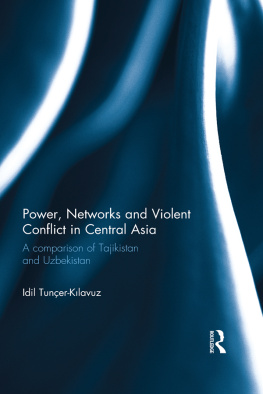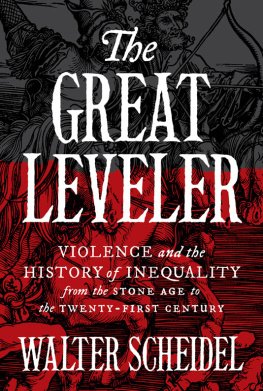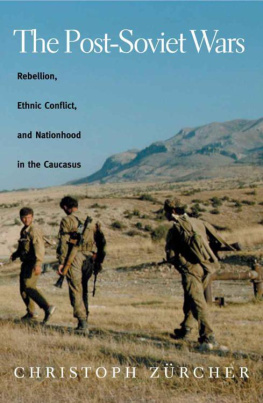Cover image: Larry Duenas
First published 2022
by Routledge
605 Third Avenue, New York, NY 10158
and by Routledge
4 Park Square, Milton Park, Abingdon, Oxon, OX14 4RN
Routledge is an imprint of the Taylor & Francis Group, an informa business
2022 Taylor & Francis
The right of Randall Collins to be identified as author of this work has been asserted in accordance with sections 77 and 78 of the Copyright, Designs and Patents Act 1988.
All rights reserved. No part of this book may be reprinted or reproduced or utilised in any form or by any electronic, mechanical, or other means, now known or hereafter invented, including photocopying and recording, or in any information storage or retrieval system, without permission in writing from the publishers.
Trademark notice: Product or corporate names may be trademarks or registered trademarks, and are used only for identification and explanation without intent to infringe.
Library of Congress Cataloging-in-Publication Data
Names: Collins, Randall, 1941 author.
Title: Explosive conflict : time-dynamics of violence / Randall Collins.
Description: New York, NY : Routledge, 2022. | Includes
bibliographical references and index.
Identifiers: LCCN 2021036160 | ISBN 9781032157733 (hardback) |
ISBN 9781032157702 (paperback) | ISBN 9781003245629 (ebook)
Subjects: LCSH: Social conflict. | Violence. | EqualitySocial aspects. |
Social mediaPolitical aspects. | Social mediaSocial aspects.
Classification: LCC HM1121 .C65 2022 | DDC 303.6dc23
LC record available at https://lccn.loc.gov/2021036160
ISBN: 978-1-032-15773-3 (hbk)
ISBN: 978-1-032-15770-2 (pbk)
ISBN: 978-1-003-24562-9 (ebk)
DOI: 10.4324/9781003245629
Typeset in Garamond
by Apex CoVantage, LLC
Contents
PART ITime-Dynamics
1 C-Escalation and D-Escalation: A Theory of the Time-Dynamics of Conflict
Introduction
C-Escalation
Victory, Defeat, or Stalemate
D-Escalation
Victory Faction or Peace Faction
Perpetuating Conflict
Notes
References
2 Time-Bubbles of Nationalism
Introduction
Solidarity Ritual in Lived Time
The 9/11 Pattern
Peak Moments Collapse Micro and Macro
Centered or Dispersed Revolutions
Banal Nationalism and Divisive Nationalism
Notes
References
3 Tipping Point Revolutions and State Breakdown Revolutions: Why Revolutions Succeed or Fail
Introduction
Tipping Point Revolutions with Easy Success
Tipping Point Revolutions that Fail
State Breakdown Revolutions
Reconciling the Two Theories
Tipping Point Revolutions and Imitative Revolutions
The Continuum of Revolutionary Effects, from Superficial to Deep
The Contemporary Era of Tipping Point Revolutions
References
4 Time-Dynamics of Violence from Micro to Macro
Introduction
Overview: Time-Dynamics within Different Scales of Violence
1. Micro-Rhythms of Entrainment, Disentrainment, and Dominated Entrainment
2. Violence-Triggering and Boredom Thresholds
3. Tension-Building and Violent Danger-Time Zones
4. Revolutionary Tipping Points: Duration of Violent Protests
5. Mass Crisis Solidarity and Hysteria Zones
6. Macro-Time-Forks
Conclusion: Nested Time-Patterns and Meta-Time
Notes
References
PART IIThe Eye of the Needle: Emotional Processes
5 Material Interests Are Ambiguous, So Interaction Rituals Steer Political Movements
Introduction
Interests Are Ambiguous as to Compatriots
Interests Are Ambiguous as to the Short, Medium, and Long Run
Interests Do Not Determine Tactics
The Superior Success of Opportunism
Interests Dont Predict Outcomes, Because of Multiple Causality
Electoral Politics Is a Blunt Instrument When It Comes to Making Major Policy Changes
Successful Interaction Rituals Predict Choices by Focusing Ideologies and Interests
References
6 Mood-Swings in the Downfall of the English Revolution
Introduction
Eight Mood-Swings in the Fall of the English Revolution
Why Did Violent Conflicts Almost Always Abort in Those Mood-Swings?
Time-Dynamics of Emotion Switches
Notes
References
7 When History Holds Its Breath: The Take-Off of the French Revolution
Introduction
Emotional Standstill on the Night of August 4, 1789and Its Antecedents
From EE-Loss to EE-Gain: Switching Sides
Note
References
8 Assault on the Capitol: 2021, 1917, 1792
Introduction
Assault on the Winter Palace, 1917
Wavering among Government Forces
Wavering among Government Politicians
Wavering among the Revolutionaries
Top-Down and Bottom-Up
Wavering among Official Forces at the Capitol, 2021
Police Lines Retreat, Violence, and Crowd Management
Fraternization
Looting and Ritual Destruction
Paris, August 10, 1792
Lessons Learned?
Notes
References
PART IIIWar and Sport: Dynamics of Winning, Losing, and Stalemate
9 The Micro-Sociology of Sport
Introduction
Three Ways of Winning a Game
Bodily Micro-Sociology in Violence and in Sport
Confrontational Tension/Fear in Violence and in Sport
Sports without Face-to-Face Conflict
The Micro-Sociology of Sports as a Laboratory
Notes
References
10 Battle Dynamics: Victory and Defeat
Introduction












